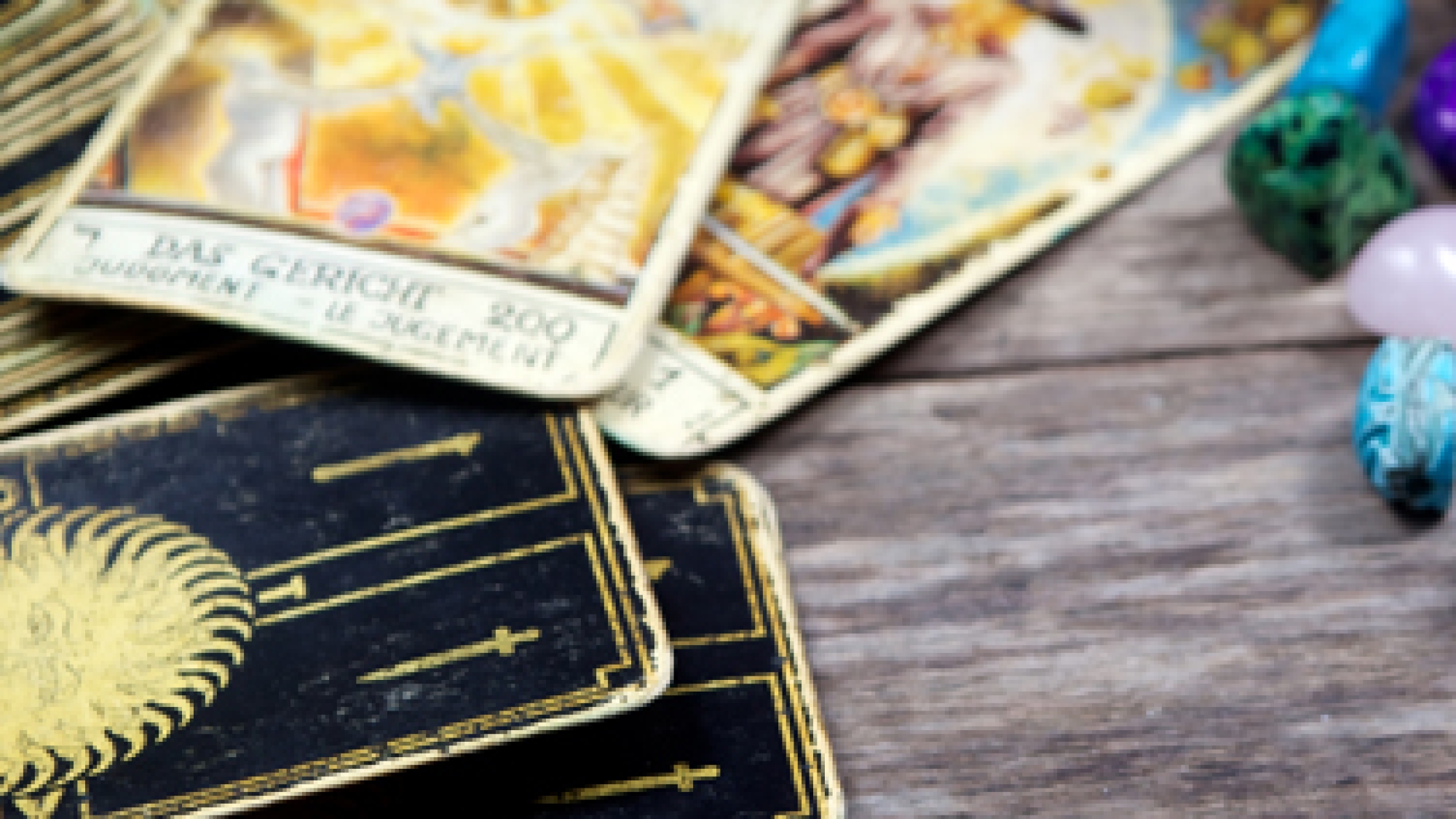The Tarot
Bring up the subject of Tarot cards, and you’re likely to get some very different reactions! For some, the thought of a Tarot card reading conjures up the romantic image of a gypsy soothsayer in a darkened tent, revealing her client’s destiny with the flip of a card, while others appreciate the cards from a purely historical or artistic perspective. Tarot cards, along with Ouija boards, numerology, pendulums and other divining tools, can be gateways to the occult – it depends on who is using them. Often frowned upon by traditional religion, Tarot cards are essentially a means to tap into the subconscious of the reader and access their own guides as well as tap into the person they are reading. Personally, I love to take a walk on the dark side and “read” the reader while I’m getting a reading!
Where did tarot cards come from, and when were they first used to predict the future?
The original form of the Tarot deck was devised in the 15th century in northern Italy, and was created to play a game called triumph, which was similar to bridge. Along with the traditional four playing card suites numbered one through ten, plus a queen, king, knight and page, the deck included 22 symbolic picture cards that were not part of any of the suites. The game with the unusual deck became popular all over Europe. People called the decks tarocchi, an Italian version of the French word tarot. Today’s Tarot decks are based on decks of this type.
It wasn’t until about four hundred years later, in 1781, that followers of the occult in France and England discovered that the early Tarot card decks lent themselves to other means besides games. They assigned meanings to each of the symbolic picture cards, and began widely using them as a divination tool.
Today’s Tarot Card Deck:
The modern Tarot deck consists of 78 cards. They are broken out into 22 major arcana and 56 minor arcana.
The Major arcana: The Tarot archetypes represented in the major arcana are designed to represent life and the various stages and events that we all go through. The Major arcana follows a path that starts with The Fool (young, pure energy) and moves through various stages and events – finishing up at the World (the end of our life cycle).
The Minor arcana: Minor Cards describes the people, feelings and situations that we encounter on our personal journey. Unlike the Major arcana, it resembles a traditional deck of playing cards. It’s made up of four suits, and each one associated with one of the elements: Wands (Fire), Cups (Water), Pentacles (Earth) and Swords (Air). There are also the Queen, King and Knight (or Jack) of each suit, and Pages or Princesses.
The Reading:
Before a reading is performed, the person who is receiving the reading shuffles the cards – concentrating on the question that they want answered. The card reader then lays the cards out in a specific pattern called a Tarot spread. There are several patterns, or spreads that can be used, and each position in the spread has it’s own significance. The meaning of the cards themselves, as well as where the cards appear in the spread are interpreted by the reader to provide guidance to the person receiving the reading.
Many Tarot card readers have differing ideas about how or why the Tarot works. Some say you only need to meditate upon the cards to trigger your intuition, until you can tap into your inner guides on your own.
In my journey as an energy healer and spiritual teacher, I’ve explored many methods for getting information, including the Tarot. To learn more about this fascinating subject, check out my live online course, Seeking the Light – it includes my newest book free and is sponsored by Hay House. Hope you’ll join me there this week!
And for a fun and fascinating discussion about Tarot and numerology, tune into my show on HayHouseRadio.com this Wednesday at 2:00 pm, Pacific, and meet my very special surprise guest, a gypsy herself – call in and have her do a reading for you!

